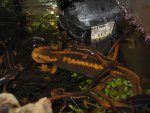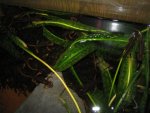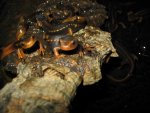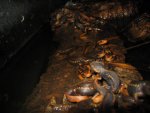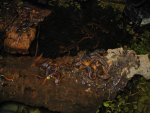I am planning on getting a Tylototriton sp.
most probably, the verrucosus.
As the caresheet on this and other websites sais,
they are the most aquatic tylototriton species.
Now I'd prefer to keep them semi terrestial, with a 50/50 setup (maybe a little bit more water then land.)
My question being, would they actually use the land part
or would I be wasting space because they'd spend most time in the water.
Still kinda new to all of this and prefer to be very well educated before getting any animals.
grtz.
most probably, the verrucosus.
As the caresheet on this and other websites sais,
they are the most aquatic tylototriton species.
Now I'd prefer to keep them semi terrestial, with a 50/50 setup (maybe a little bit more water then land.)
My question being, would they actually use the land part
or would I be wasting space because they'd spend most time in the water.
Still kinda new to all of this and prefer to be very well educated before getting any animals.
grtz.

